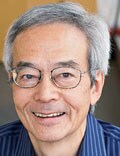Mutations in genes associated with cardiac and seizure disorders also appear to be linked to sudden unexplained deaths in young children and may explain nearly 9% of such cases, researchers have found.
Previous studies have found de novo genetic variants ― those not found in either parent but which occur for the first time in their offspring ― that increase the risk of cardiac and seizure disorders, but research on sudden unexplained deaths in children (SUDC) is limited, according to Matthew Halvorsen, PhD, of the University of North Carolina at Chapel Hill, and colleagues. Most cases of SUDC occur in children aged 1 to 4 years, and a lack of standardized investigation systems likely leads to misclassification of these deaths, they say.
Compared to sudden infant death syndrome (SIDS), which occurs in approximately 1400 children in the United States each year, approximately 400 children aged 1 year and older die from SUDC annually. A major obstacle to studying these cases is that so-called molecular autopsies ― which incorporate genetic analysis into the postmortem examination ― typically do not assess the parents’ genetic information and thus limit the ability to identify de novo mutations, they added.
In a study published in the Proceedings of the National Academy of Sciences, Halvorsen’s group obtained whole exome sequence data from 124 “trios,” meaning a dead child and two living parents. They tested for excessive de novo mutations for different genes involved in conditions that included cardiac arrhythmias and epilepsy. The average age at the time of death for the children was 34.2 months; 54% were male, and 82% were White.
Children who died of SUDC were nearly 10 times as likely to have de novo mutations in genes associated with cardiac and seizure disorders as unrelated healthy controls (odds ratio, 9.76).
Most pathogenic variants were de novo, which highlights the importance of trio studies, the researchers note.
The researchers identified a total of 11 variants associated with increased risk of SUDC, seven of which were de novo. Three of the 124 cases carried mutations (two for RYR2 and 1 for TNNI3) affecting genes in the CardiacEpilepsy dataset proposed by the American College of Medical Genetics and Genomics, strengthening the connection to seizure disorders.
Another notable finding was the identification of six de novo mutations involved in altering calcium-related regulation, which suggests a cardiac susceptibility to sudden death.
The data support “novel genetic causes of pediatric sudden deaths that could be discovered with larger cohorts,” the researchers note. Taken together, they say, the gene mutations could play a role in approximately 9% of SUDC cases.
The study findings were limited by several factors, including lack of population-based case ascertainment, exclusive focus on unexplained deaths, potentially missed mutations, and use of DNA from blood as opposed to organs, the researchers noted.
However, they conclude “the data indicate that deleterious DNMs are significant genetic risk factors for childhood sudden unexplained death, and that their identification may lead to medical intervention that ultimately saves lives.”
Findings Highlight Impact of SUDC
“This study is important because SUDC is a much more pressing medical need than most people realize,” Richard Tsien, PhD, of New York University Langone Medical Center, and the corresponding author of the study, told Medscape Medical News.

Dr Richard Tsien
Although SUDC is less common than SIDS, SUDC has essentially no targeted research funding, Tsien said. Study co-author Laura Gould, MA, a researcher and mother who lost a young child to SUDC, worked with Orrin Devinsky, MD, to create a registry for families with cases of SUDC. This registry was instrumental in allowing the researchers to “do the molecular detective work we need to do” to see whether a genetic basis exists for SUDC, Tsien said.
“The detective work comes up with a consistent story,” he said. “More than half of the genes that we found are involved in the normal function of the heart and brain,” performing such functions as delivering calcium ions to the inside of the heart cells and nerve cells.
The study “is the first of its kind,” given the difficulty of acquiring DNA from the child and two parents in SUDC cases, Tsien said.
Overall, approximately 10% of the cases have a compelling explanation based on the coding of DNA, Tsien said. From a clinical standpoint, that information might affect what a clinician says to a parent.
A key takeaway is that most of the genetic mutations are spontaneous and are not inherited from the parents, Tsien said. The study findings indicate that parents who suffer an SUDC loss need not be discouraged from having children, he added.
For the long term, “the more we understand about these disorders, the more information we can offer to families,” he said. Eventually, clinicians might be able to use genetics to identify signs of when SUDC might be more likely. “For example, if a child shows a very mild seizure, this would alert them that there might be potential for a more drastic outcome.”
Meanwhile, families with SUDC cases may find support and benefit in signing up for the registry and knowing that other families have been through a similar experience, Tsien said.
Genetic Studies Create Opportunities
A significant portion of pediatric mortality remains unexplained, according to Richard D. Goldstein, MD, of Boston Children’s Hospital. One reason is the lack of a formal diagnostic code to identify these deaths.

Dr Richard Goldstein
Research to date has suggested links between SUDC and a family history of febrile seizures, as well as differences in brain structure associated with epilepsy, Goldstein said.
“An important hypothesis is that these deaths are part of a continuum that also includes stillbirths, SIDS, and sudden unexpected death in epilepsy [SUDEP],” Goldstein said. “By mandate, investigations of these deaths occur under the jurisdiction of medical examiners and coroners and have, for the most part, been insulated from developments in modern medicine like genomics and proteomics, elements of what are referred to as the molecular autopsy, and studies such as the current study bring attention to what is being missed.”
Goldstein said the new study buttresses the “conventional clinical suspicion” about the likely causes of SUDC, “but also strengthens the association between SUDP and SUDEP that we and others have been positing. I think the researchers very nicely make the point that epilepsy and cardiac arrhythmia genes are not as separated in their effects as many would believe.”
As for the clinical applicability of the findings, Goldstein said medicine needs to offer parents more: “Pediatric deaths without explanation deserve more than a forensic investigation that concerns itself mostly with whether there has been foul play,” he said. “We need to figure out how to engage families, at an incredibly vulnerable time, in helping find the cause of the child’s death and also contributing to needed research. Most of the reported variants were de novo, which means that parent participation is needed to figure out these genetic factors but also that we can offer reassurance to families that other children are not at risk.”
The study was supported by the SUDC Foundation and Finding a Cure for Epilepsy and Seizures (New York University). Tsien disclosed support from the National Institutes of Health and a grant from FACES. Goldstein reported no relevant financial relationships.
Proc Natl Acad Sci. Publishe donline December 20, 2021. Full text
Heidi Splete is a freelance medical journalist with 20 years of experience.
For more news, follow Medscape on Facebook, Twitter, Instagram, and YouTube.
Source: Read Full Article
